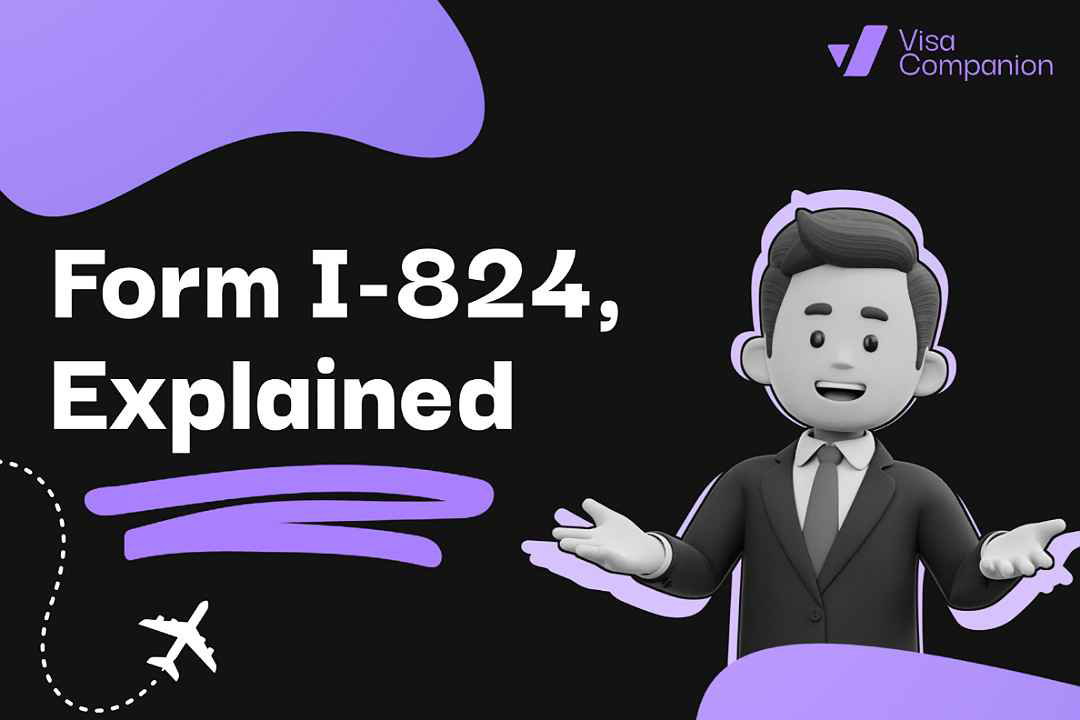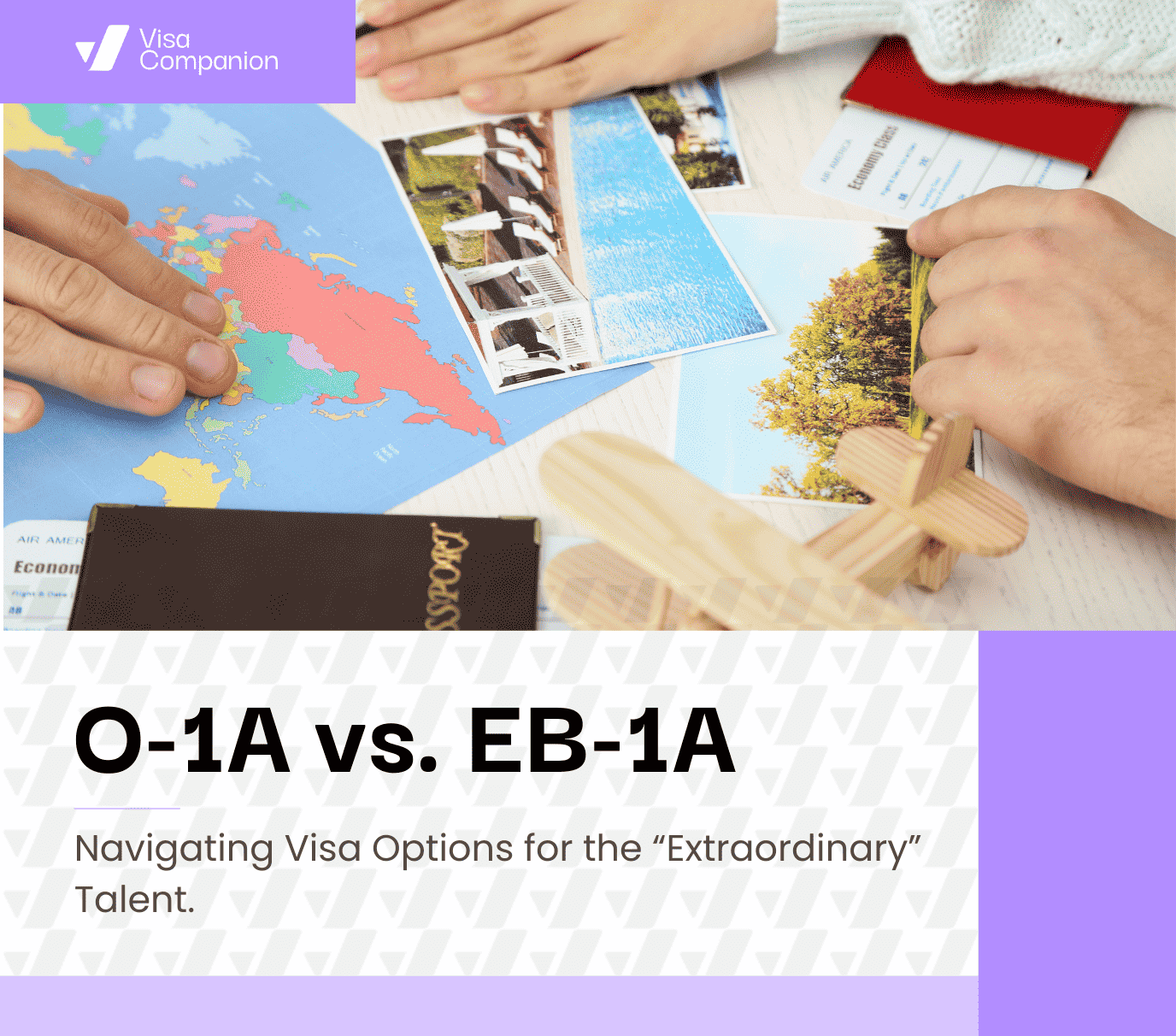Form I-824, Explained

Form I-824, Explained
What is Form I-824?
Form I-824, officially known as the "Application for Action on an Approved Application or Petition," is a form used to request various actions related to approved applications or petitions filed with U.S. Citizenship and Immigration Services (USCIS). Form I-824 is not used to apply for an immigration benefit initially but rather to request actions related to applications or petitions that have already been approved.
In this article, we’ll cover the details of Form I-824, including processing time, the cost of filing, and when to use it to receive necessary updates on your approved application.
Reasons to File Form I-824
- Form I-824 is generally used to request a copy of a previous decision or application approval by USCIS. According to USCIS guidelines, applicants can file Form I-824 for the following purposes:
- Request Information from U.S. Customs and Border Protection (CBP): If you have been approved to enter the U.S. but have lost or damaged your approval notice, you can file Form I-824 to request a copy of various CBP-related petitions, including Form I-192 (Application for Advance Permission to Enter as a Nonimmigrant), and Form I-212 (Application for Readmission after Deportation or Removal).
- Request a Duplicate Notice of Action: If you received a Form I-797 Notice of Action from USCIS, but the form was lost, damaged, or stolen, you can file Form I-824 to request a new copy.
- Notify a U.S. Embassy or Consulate Regarding a USCIS Decision: You can file Form I-824 to alert a U.S. Embassy or consulate that you have been approved entry to the U.S. or you have received permanent resident status. In certain scenarios, this can help alert a U.S. Embassy or consulate that an applicant’s dependents are now eligible to apply for immigrant visas.
- Notify the National Visa Center (NVC) Regarding a USCIS Decision: You can file Form I-824 to notify the National Visa Center (NVC) of certain USCIS decisions that may impact your immigration status.
- Notify the U.S. Department of State Regarding Naturalization Status: You can file Form I-824 to request that USCIS notifies the State Department that you have become a U.S. citizen through naturalization.
When Form I-824 Should Not Be Filed
As noted above, Form I-824 is only used to receive an update or information request for an already approved application. Form I-824 should not be filed for the following purposes:
- To initially apply for a visa or immigration benefit;
- To request information on a decision or application that is no longer valid;
- To request information on a pending application;
- To request information on a denied application.
Now that we understand what Form I-824 is, and its purpose let's go through the step-by-step process of filling it out.
Step-by-Step Guide to Filling Out Form I-824
There are seven parts to Form I-824, Application for Action on an Approved Application or Petition. The document itself is seven pages long. Here is a step-by-step guide to filling out your application.
At the very top of the form, USCIS has reserved space for USCIS use only.
Part 1
The first section is information about you. You will include:
- Whether you were an applicant or a petitioner
- Your last, first, and middle name
- Your company/organization, if applicable
- Your current immigration status
- Certificate of naturalization or citizenship number, if applicable
- A-Number
- Date of birth
- Country of birth
- Country where you have citizenship
- IRS tax number, if applicable
- U.S. social security number if applicable
- USCIS online account number if applicable
- Mailing address
If any of the sections do not apply to you, put “N/A” in the box instead of leaving it blank.
Part 2
Part 2 is titled “Reason for Request.” In this section, you tell USCIS why you are submitting a Form I-824 by checking a box. If you change a port of entry or U.S. Consulate, you will need to fill out which new U.S. consulate or port of entry you wish USCIS to notify.
For further detail, here are your options:
- A request for a duplicate USCIS notice of action
- A request for USCIS to let a new U.S. Consulate know about your nonimmigrant visa approval or new port of entry request
- A request for USCIS to let a U.S. Consulate know about an adjustment of status to permanent resident along with a request for immediate family members to join you
- A request for USCIS to send an approved immigrant visa petition to the National Visa Center
- A request that the U.S. Department of State becomes aware of your naturalization proceedings to become a U.S. citizen
Part 3
Part 3 is where you can provide information about anyone who was the beneficiary on the previous form other than you. You will also provide information about your dependents in this section. This is applicable to those who are requesting family members to join them, also known as follow-to-join benefits.
Like in Part 1, you will fill out the information about the dependent’s name, date of birth, country of birth, and country of citizenship. You will also include their relationship to you. Remember, the beneficiary does not fill out this form, only you do on their behalf.
Part 4
Part 4 is for your statement:
- Contact information
- Declaration
- Certification
- Signature
Before completing this section, read the USCIS I-824 penalties section. Then fill out the rest of Part 4. In this section, you will need to:
- State that you can read and understand English or that you had a named interpreter read the questions to you and answer them on your behalf
- Provide your phone number and email address
- Sign and date the form
Part 5
If you need an interpreter, Part 5 is where you provide your interpreter’s contact information and signature.
Part 6
If you used a preparer for your form, Part 6 is where you provide their information and signature.
Part 7
If there is any more information that you need to include on your Form I-824, you will write it out in Part 7.
Form I-824 Additional Evidence
The evidence you submit will vary depending on the purpose of your Form I-824 request.
Form I-824 Filing Fee
Prepare the correct filing fee:
- Check the current fee ($590) on the USCIS website, as it may change.
- Payment by check or money order made payable to "U.S. Department of Homeland Security".
- Write your A-Number (if any) on the check or money order.
- You can use Visa, MasterCard, American Express, Discover, and prepaid cards from these networks.
- Complete and sign Form G-1450, Authorization for Credit Card Transactions.
- Place this form on top of your I-824 application when submitting it by mail.
N.B: Personal checks must be pre-printed with your name and address.
Mail the form to the appropriate USCIS address based on your location (check USCIS website for current mailing addresses). It’s important that all documents you send in are copies of original documents and not the originals themselves. USCIS or CBP may request originals, but never submit original documents with the primary application.
Form I-824 Timeline
The processing time for Form I-824 varies depending on where the petition is filed and the application category you’re requesting an update for. Form I-824 is typically filed at any one of the USCIS Service Centers or the National Benefits Center, depending on your specific application. You can check the current processing times for Form I-824 per specific service center here.
Remember, accuracy and completeness are crucial when filling out any immigration form. If you're unsure about any part of the process, consider booking a consultation with us .
More Blogs

Navigating EB2-NIW and EB-1A Visa Timelines: Strategies for Efficient Processing
June 2, 2023Understanding the processing times for EB2-NIW (National Interest Waiver) and EB-1A (Extraordinary Ability) visas is crucial for applicants aspiring to obtain these U.S. employment-based preference visas.

EXPLORE THE PATHWAYS TO U.S. RESIDENCY: UNDERSTANDING THE EB-2 NIW VISA
April 22, 2023The EB-2 visa is one of the most sought-after visa classifications in the U.S. employment-based immigration system. Designed for individuals with advanced degrees or exceptional abilities in their field, this visa provides a pathway to permanent residency (Green Card) in the U.S. In particular, the EB-2 National Interest Waiver (NIW) stands out because it allows qualified individuals to bypass the need for employer sponsorship and labor certification. In this blog, we’ll focus on the EB-2 NIW visa classification—what it is, how to qualify, and the steps to apply. Whether you’re a scientist, entrepreneur, or professional with expertise in a critical field, this guide will provide the comprehensive information you need.

O-1A vs. EB-1A: Navigating Visa Options for the "Extraordinary" Talent
April 22, 2023Explore the differences between the O-1A and EB-1A visas for talented individuals immigrating to the US. Learn about the temporary, sponsored O-1A visa versus the permanent, self-petitioning EB-1A option. Gain clarity on which visa aligns best with your goals.

Empowering Your Immigration Journey with Expert Guidance
April 2, 2024Imagine the thrill of a new life in the US. It could be a groundbreaking research opportunity at a prestigious university, reuniting with family you haven't seen in years, or the chance to build a life in a dynamic, multicultural society. But before you celebrate with that celebratory American apple pie, the intimidating world of immigration laws looms. Complex legalese, unfamiliar processes with ever-changing deadlines, and the constant worry of rejection – enough to turn anyone's dream into a stressful mess.